Essential On-Page SEO Techniques
Effective on-page SEO is crucial for enhancing a website’s visibility and ensuring it meets user expectations. This section covers two fundamental techniques: search intent optimization and title tag optimization.
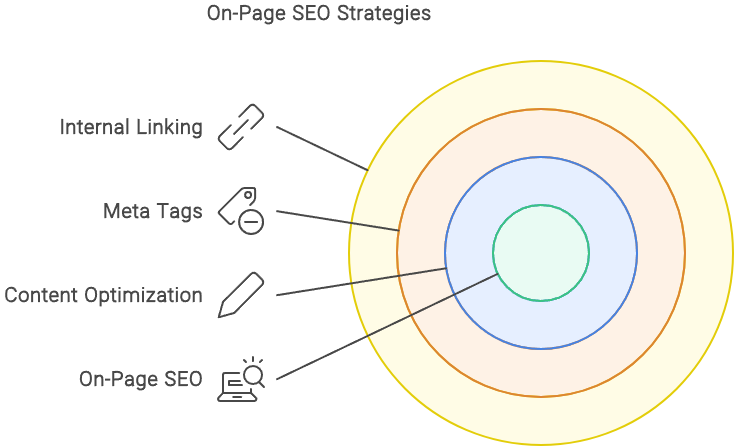
Search Intent Optimization
Optimizing for search intent is a vital aspect of on-page SEO. It involves understanding what users are looking for when they enter a search query and tailoring content to meet those needs. By aligning content with user intent, a website can improve its relevance and ranking in search engine results pages (SERPs).
Common tasks associated with on-page SEO include optimizing for search intent, title tags, internal links, and URLs (Semrush). This optimization helps ensure that the content not only attracts visitors but also retains them by providing the information they seek.
| Search Intent Type | Description | Example |
|---|---|---|
| Informational | Users seek knowledge or answers | “What is on-page SEO?” |
| Navigational | Users look for a specific website | “Facebook login” |
| Transactional | Users intend to make a purchase | “Buy running shoes online” |
Title Tag Optimization
The title tag is a critical component for on-page optimization. It appears in the SERP and plays a significant role in attracting clicks. An effective title tag should include the primary keyword while remaining compelling to users.
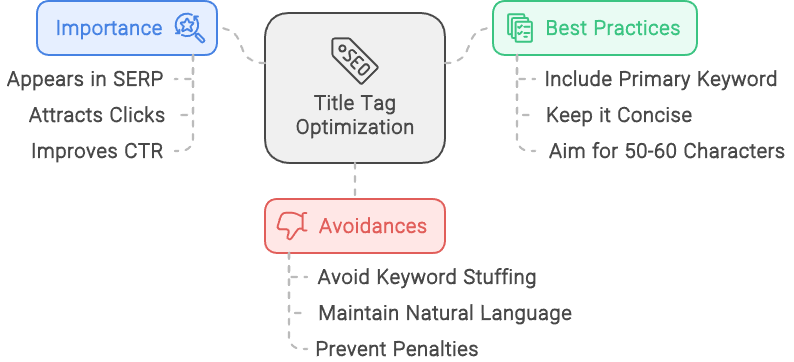
It is recommended to avoid keyword stuffing, as this can lead to penalties from search engines. The ideal length for a title tag is between 50 to 60 characters to prevent truncation by Google. A well-crafted title tag helps improve the click-through rate (CTR) and enhances the overall effectiveness of the SEO strategy.
| Title Tag Best Practices | Recommendations |
|---|---|
| Include Primary Keyword | Ensure the primary keyword is present |
| Keep it Concise | Aim for 50-60 characters |
| Avoid Keyword Stuffing | Maintain natural language |
Implementing these essential on-page SEO techniques is fundamental for small businesses aiming to boost their online presence. For more insights on optimizing other elements of a webpage, explore our guide on on-page seo techniques and meta tags and meta descriptions.
Google’s Focus on User Experience
As Google continues to evolve its algorithms, it places a significant emphasis on user experience as a key factor in search rankings. This focus on delivering a positive experience is reflected in various on-page SEO strategies.
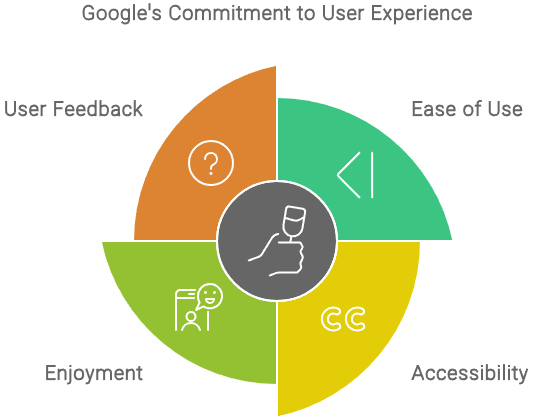
People-First Content
Google prioritizes “people-first content” when evaluating webpages. This means content should be created with the user’s needs and preferences in mind. By focusing on high-quality, relevant, and engaging content, website owners can improve their chances of ranking higher in search results. According to Semrush, Google actively considers on-page SEO signals, and optimizing for users can lead to better search outcomes.
Some essential elements of people-first content include:
- Relevance: Content should address the needs and questions of the target audience.
- Clarity: Information must be presented clearly and concisely.
- Engagement: Use of visuals, lists, and formatting techniques to enhance readability.
Incorporating these elements can significantly improve user engagement and satisfaction, which are critical for effective on-page SEO techniques.
Image Optimization
Image optimization plays a crucial role in enhancing user experience and improving SEO. Properly optimized images can lead to faster page loading times, which is vital since slow-loading pages can deter users. According to HubSpot, promoting a good user experience is essential for effective SEO.
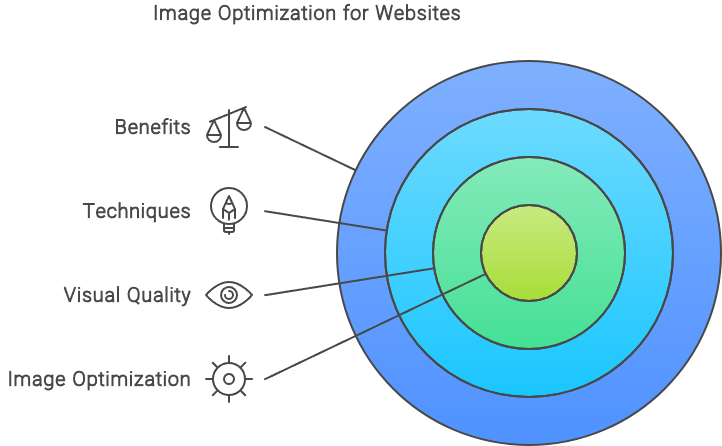
Key strategies for optimizing images include:
- File Size: Compress images without sacrificing quality to reduce loading times.
- Alt Text: Use descriptive alt text to improve accessibility and provide context to search engines.
- Responsive Images: Implement the viewport meta tag to ensure images adapt to various screen sizes SEMrush.
| Image Optimization Technique | Benefits |
|---|---|
| Compressing Images | Reduces loading times |
| Descriptive Alt Text | Enhances accessibility and SEO |
| Responsive Images | Improves viewing experience on mobile devices |
For detailed guidance on optimizing images for SEO, visit our article on image optimization for seo.
By focusing on people-first content and image optimization, businesses can significantly improve their website’s user experience and align with Google’s ranking criteria. Together, these strategies contribute to a more effective on-page SEO checklist.
Advanced On-Page Strategies
In the realm of on-page SEO, utilizing advanced strategies can significantly enhance a website’s visibility and user engagement. Two essential techniques are schema markup implementation and internal linking best practices.
Schema Markup Implementation
Schema markup plays a vital role in helping search engines comprehend the content of a webpage more effectively. By adding structured data to a page, website owners can communicate the topic and context of the content more clearly. This not only aids search engines but can also enhance the appearance of search results through rich snippets, which may include images, ratings, and other engaging features (Semrush).
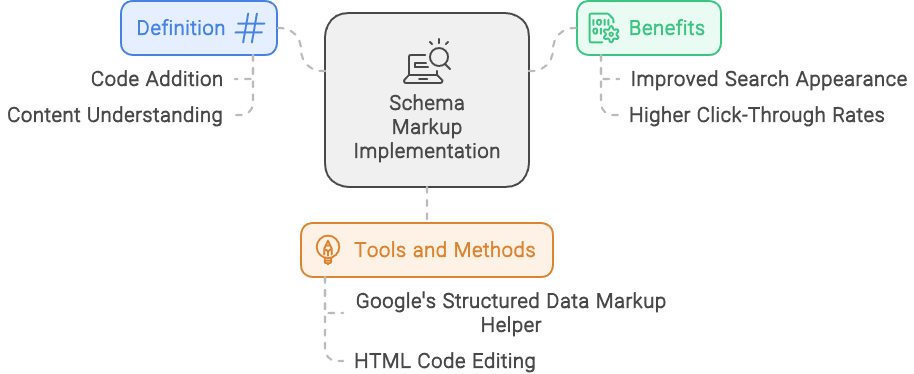
Utilizing schema markup can lead to improved click-through rates as users are drawn to visually appealing snippets in search engine results pages (SERPs). Some common types of schema include:
| Schema Type | Description |
|---|---|
| Article | Used for news articles, blog posts, and other written content. |
| Product | Helps display product information and reviews in search results. |
| Local Business | Enhances local search visibility by providing details about a business. |
Implementing schema is straightforward. Website owners can use tools like Google’s Structured Data Markup Helper to create the necessary code, which is then added to the HTML of the webpage.
Internal Linking Best Practices
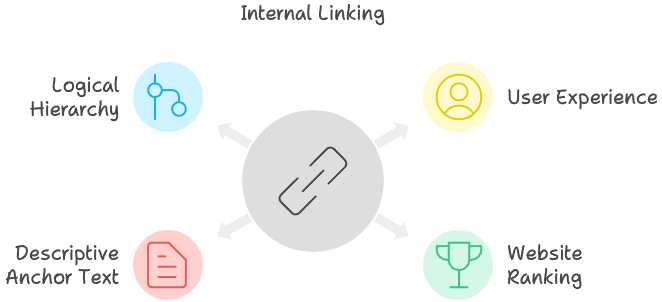
Internal linking is another key element of an effective on-page SEO strategy. This technique involves creating a network of connections between related content on a website, allowing users to navigate easily between pages. Internal links help in several ways:
- Enhanced User Experience: By providing links to relevant content, users can delve deeper into specific topics, improving engagement metrics and reducing bounce rates.
- SEO Improvement: Internal links turn isolated web pages into parts of a larger content structure, distributing link equity and improving overall SEO.
- Guiding Conversions: Effective internal linking leads users through their journey on the site, from initial awareness to potential conversion, by strategically linking to related content.
When creating internal links, consider the following best practices:
| Best Practice | Description |
|---|---|
| Use Descriptive Anchor Text | Ensure the clickable text provides context about the linked content. |
| Link to Relevant Content | Only link to pages that are relevant to the current article or topic. |
| Limit the Number of Links | Avoid overwhelming users with too many links; focus on quality over quantity. |
Incorporating schema markup and strong internal linking strategies will enhance the effectiveness of an on-page SEO checklist, driving both traffic and user satisfaction on a website.
Local SEO Integration
Local SEO plays a crucial role in enhancing a website’s visibility for geographically relevant searches. This section will delve into effective local SEO strategies and the optimization of Google My Business.
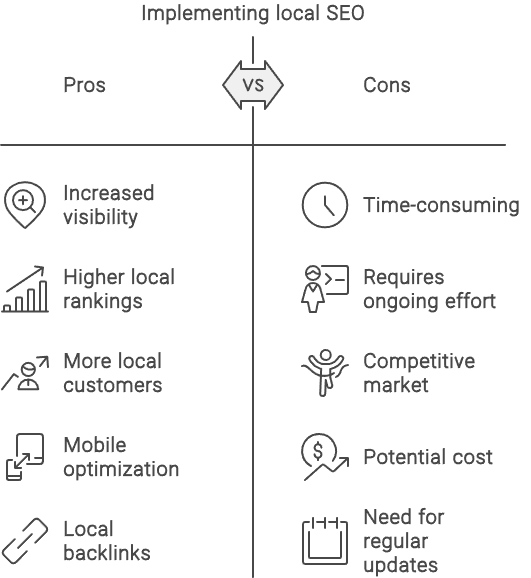
Local SEO Strategies
Local SEO is the process of optimizing a website specifically for local search results by tailoring the site for keywords that are relevant to the business’s geographic location and local search engines. Implementing local SEO strategies can optimize digital assets, including websites and business listings, to appear prominently in local search results, connecting nearby customers with local businesses. This is especially beneficial for brick-and-mortar establishments.
Some effective local SEO strategies include:
| Strategy | Description |
|---|---|
| Keyword Optimization | Use location-specific keywords in website content, meta tags, and descriptions. |
| Local Listings | Ensure consistent business information across various online directories. |
| Customer Reviews | Encourage customers to leave positive reviews on platforms like Google and Yelp. |
| Local Content | Create content that is relevant to the local community, such as blog posts or events. |
Adopting these strategies can help businesses achieve better online visibility, which is crucial for attracting more customers from relevant local searches in today’s competitive market.
Google My Business Optimization
Google My Business is an essential tool for local SEO. A well-optimized Google Business Profile can increase the likelihood of customers visiting a physical location by 70% (ARNLWeb). To optimize a Google My Business profile effectively, consider the following steps:
- Complete All Information: Fill out all sections of the profile, including business name, address, phone number, website, and hours of operation.
- Use Relevant Categories: Select appropriate categories that describe the business accurately to help Google understand what type of services are offered.
- Upload High-Quality Images: Include quality images of the business, products, and services to attract potential customers.
- Encourage Customer Interaction: Respond to reviews and questions to foster engagement and build trust with potential customers.
- Post Regular Updates: Share news, offers, and events on the profile to keep the audience engaged and informed.
By focusing on these optimization strategies for Google My Business, businesses can significantly enhance their local SEO efforts and improve their online presence. For more information on various on-page SEO techniques, visit our detailed guide.

